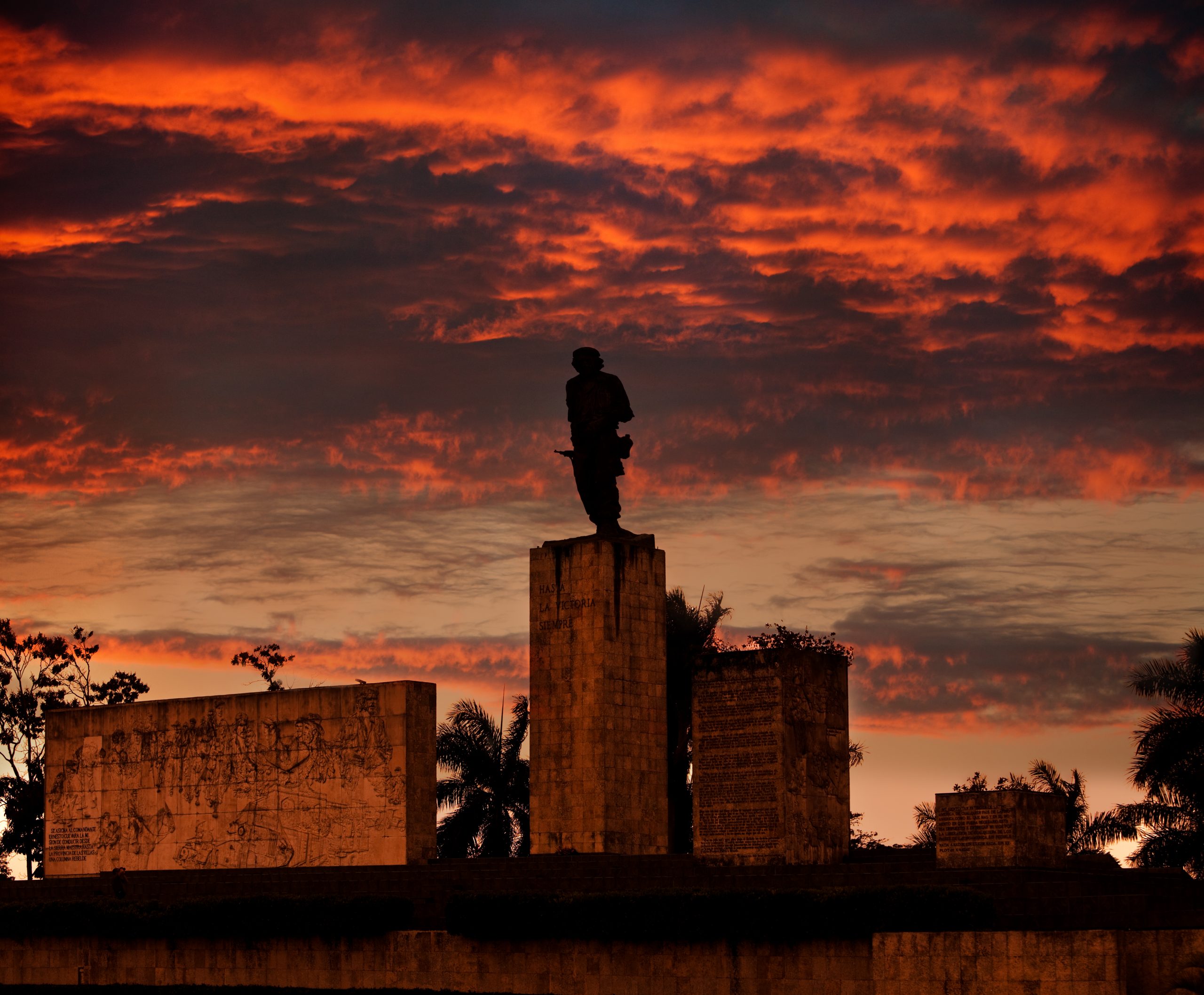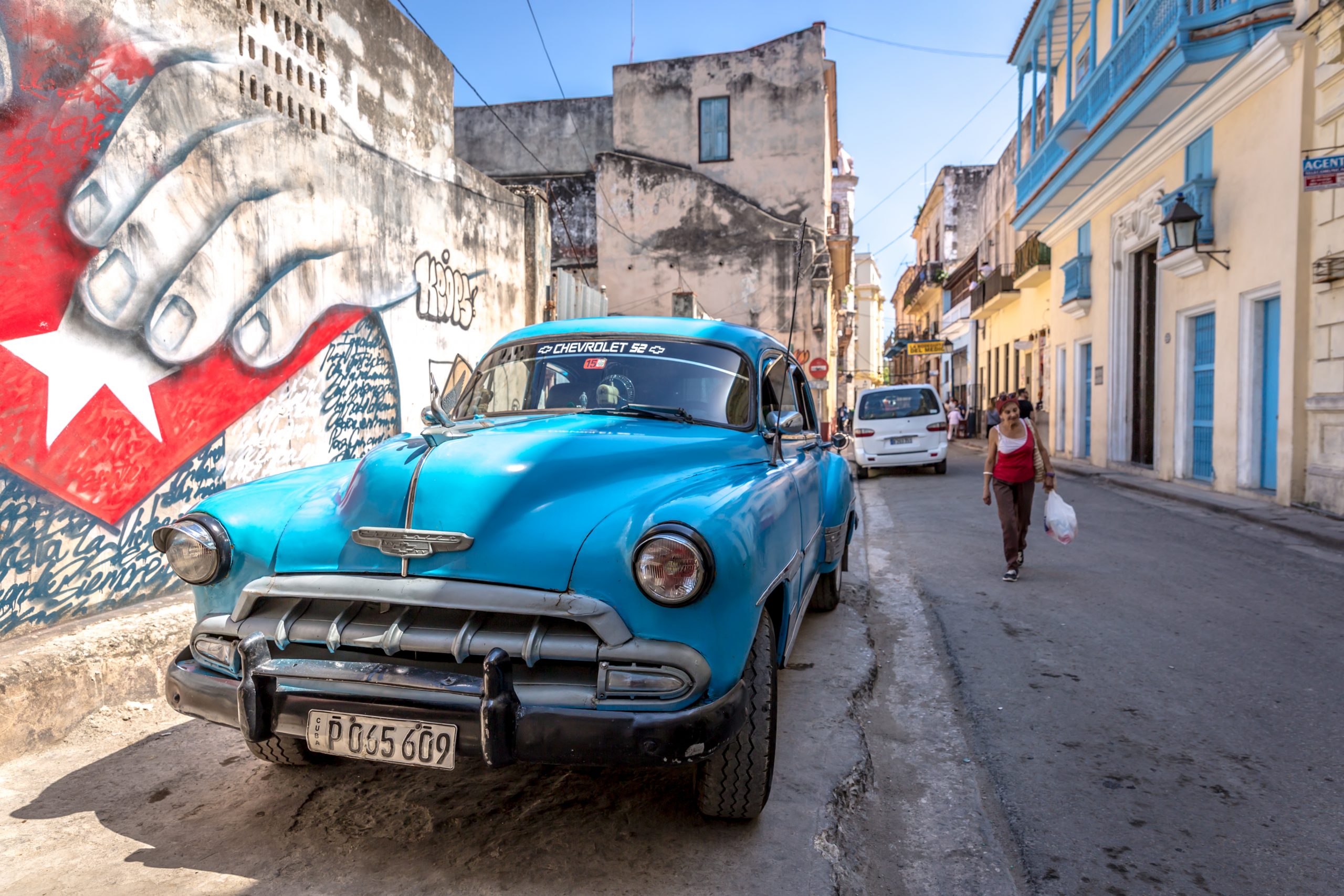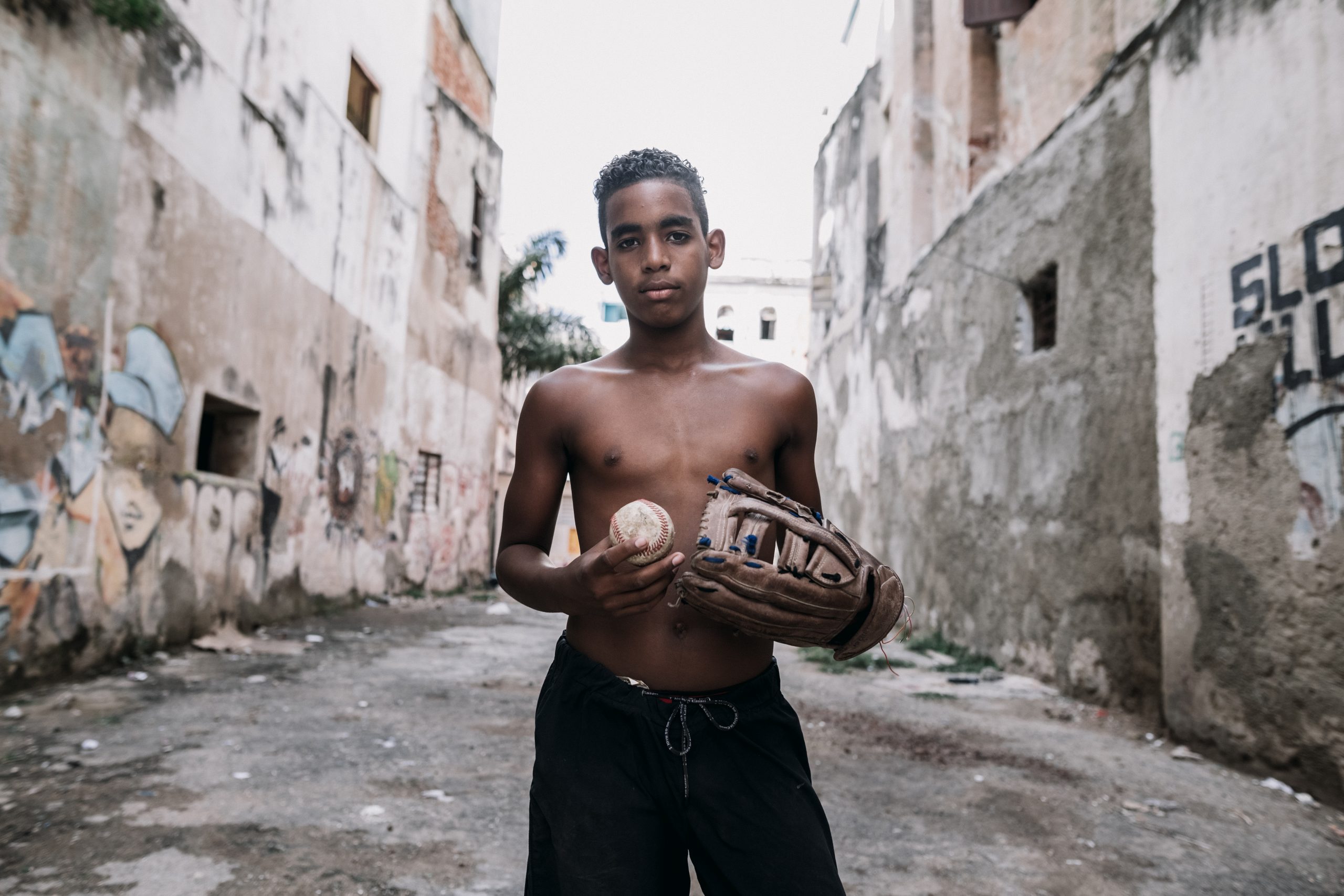Santa Clara, is Cuba’s 5th biggest city, that holds a special place in Cuba’s revolutionary history. Famous for the Battle of Santa Clara, Santa Clara was taken over by a revolutionary battalion led by Che Guevara by the afternoon on New Years Eve 1958. It is seen as a decisive chapter in the revolution as President Batista escaped Cuba within 12 hours afterwards. As such this city is a mini pilgrimage destination for Che Guevara worshippers.
History of the Revolution
You cannot miss the Plaza de la Revolucion. The is the open space that is overlooked by a huge bronze statue of Che Guevara that sits atop the museum and the Che Guevara mausoleum. It is nothing short of a big, bold reminder to every local and visitor of Che’s importance here. Wonder inside the Museum and Memorial, and you will find photographs, depictions, writings, exhibits and memorabilia all exist here related to Che Guevara’s life from early childhood through to the end of his life as a revolutionary. The queues can at times be long, but it’s a must visit.
AIthough the city is trying to get away from just being known by Che, there are reminders of him scattered around the city, like in Parque Vidal. The centre of the city, yet scars of more recent division are evident on the facade of mint-green Hotel Santa Clara Libre on the park’s west side: it’s pockmarked by bullet holes from the 1958 battle for the city between Guevara and Batista’s government troops.

Cultural Centre
Today all the colors of Cuba’s cultural rainbow mix in one of the nation’s busiest and most vibrant urban spaces, particularly prominent in the evenings. Interestingly littered with a mix of colonial and neo-colonial buildings and structures, the streets become full quickly with all ages of workers, shoppers, travelers and local musicians. Marvel at the statues of local philanthropist Marta Abreu and the emblematic El niño de la bota (Boy with a Boot), a long-standing city symbol or enjoy exciting music by the municipal orchestra from Thursday to Sunday at 8pm.
Do you still want to learn more about Che and the revolution? Visit Sitio-Museo Acción Contra El Tren Blindado, this small boxcar museum became a historical site on 29 December 1958, when Ernesto ‘Che’ Guevara and a band of 18 rifle-wielding revolutionaries derailed an armored train using a borrowed bulldozer and homemade Molotov cocktails. The museum – east on Independencia, just over the river – marks the spot where the train derailed and ejected its 350 heavily armed government troops. The celebrated bulldozer is mounted on its own plinth at the entrance. And you can even get inside the carriages!

Amazing Cigars
Santa Clara also houses one of Cuba’s best cigar factories, Fábrica de Tabacos Constantino Pérez Carrodegua. The tobacco factory here makes a quality range of Montecristos, Partagás and Romeo y Julieta cigars. Tours here are more relaxed compared to those in Havana, and so the experience is a lot more interesting. Not only can you buy great cigars, but also cheap rum and excellent coffee across the street at La Vequita, the factory’s sales outlet.
Street Art
Browse a series of comic-style and frequently changing wall paintings, which reflect the character
and history of Cuba in a humorous manner. The Murals of Santa Clara (Melaíto Murals) present a lighthearted look at political situations, both past and present, from Cuba and around the world. This series of comic book cartoon paintings adorn the wall of a street located a short walk from Santa Clara’s city center. The Murals is a public art gallery produced by a group of caricaturists called Melaíto. The group also creates a monthly comic book section for a local newspaper.

The sports
Baseball is a popular sport in Cuba and you can even watch a National-league game in Santa Clara. Estadio Sandino will only cost you cents for a ticket that can be from anytime during the week whilst in season.
Why not get on the Simply Cuba Guided Tour to discover this amazing place?


